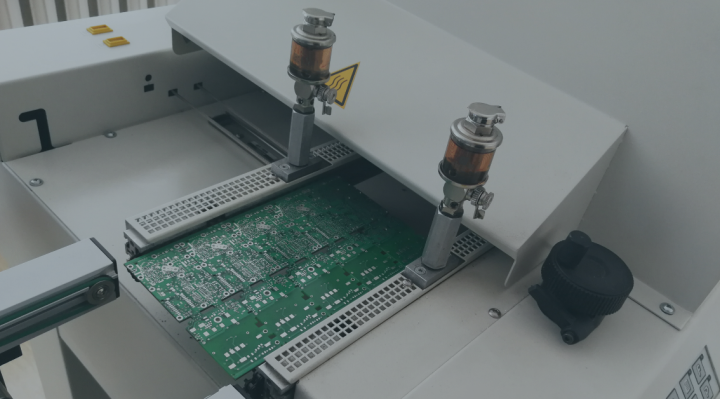A key skill required in a high-tech industry such as contract electronics assembly is problem solving. This is due to the very nature of PCB assembly, which is a sophisticated task that involves a number of complex processes.
Which is why it is essential to have problem-solving knowledge and skills, as these will be crucial to how quickly the EMS provider can deal with issues, and to the success of the OEM’s design.
Troubleshooting
When choosing a troubleshooting method, it is crucial to know when a particular coping approach should be used. Therefore, it is crucial to have a practical knowledge of a variety of methods and their usefulness for a particular scenario.
One of the most important and frequently used problem-solving approaches is the PDCA cycle, or Plan-Do-Check-Act.
PDCA (Plan-Do-Check-Act)
The PDCA cycle is an iterative problem-solving approach mainly used to improve a process or implement a change. As a continuous improvement method, it involves multiple iterations to test and analyse new solutions in an endless striving for excellence.
The PDCA cycle is also a useful technique for analysing and solving problems in PCB assembly, as it offers high flexibility in successive loop iterations.
History of the PDCA cycle
The PDCA cycle was first introduced by Walter Shewhart, who, in his book Economic Quality Control of Manufactured Product, applied the scientific method to economic quality control.
Shewhart’s thesis was further developed by W. Edwards Deming, an eager advocate of Shewhart’s work. Deming expanded upon Shewhart’s idea and used the scientific method not only for quality control, but also to improve processes.
Deming popularised the method, which he called the Shewhart cycle, among Japanese engineers. In Japan, the Shewhart cycle was combined with the kaizen approach (the Japanese philosophy of continuous improvement, developed by Kaoru Ishikawa), Toyota’s production system and the Lean Manufacturing approach to become what we now call the Plan-Do-Check-Act (PDCA) cycle.
Today, the PDCA cycle is widely used as part of lean project management and goes by many different names, such as:
- Plan-Do-Check-Act, or PDCA
- the Deming cycle, circle or loop
- the Shewhart cycle
- or, in a slightly modified version, PDSA, or Plan-Do-Study-Act, where Study means analyse.
4 steps of the PDCA cycle
Included in its name are the four stages of the PDCA process: planning, doing, checking and acting.
1. Plan
The first step to improving the process is to find out what needs to be done. The following aspects are determined
- Project goals
- Parties involved
- Project schedule
- Project results or end result
- Key risks or project limitations
- Project success indicators
The PDCA cycle can be used for a variety of projects, whether created from scratch or to improve the quality of existing projects. However, whatever the scenario, it is important to build a solid foundation, i.e. to plan the project well, as this will always put it on the right track.
Each time the PDCA cycle is restarted, it is crucial to review the project plan, make sure that it is good and accurately reflects the project goals.
PDCA is a cycle. As such, one may not know all answers the first time around, as each subsequent cycle will produce both conclusions and answers.
One more thing: Planning is a key point in the PDCA cycle and should not be overlooked, as the time spent on proper project planning will pay off.
2. Do
The next step after refining the project plan is to try it out. Similarly to most lean project management methods, PDCA recommends small, incremental changes. Therefore, in the “Do” step of the PDCA cycle, it is smart to implement a small-scale project plan. Simply to make sure that it works.
3. Check
The “Check” step involves evaluating the results of tests from the “Do” phase to make sure that everything went according to plan. As a rule, there are issues here that require improvement in the next “Do” phase. Remember that the “Check” phase allows small deviations to be found that will grow and become problematic.
4. Act
Once the “Check” phase is completed, it is time to move on to the “Act” step, which involves implementing the entire project or improving the process. Since PDCA is a cycle, you can go back to the planning phase if necessary and improve the project or process.
When to use the PDCA cycle?
The PDCA cycle is a general framework for addressing project management and process improvement issues. As such, it can be used to improve or enhance any project.
The Plan-Do-Check-Act cycle is particularly useful for:
- Quickly testing solutions
- Minimising errors
- Maximising results
- Streamlining iterative procedures
- Developing new processes
- Continuously improving processes
PDCA pros and cons
The PDCA cycle is a powerful tool for continuous improvement, but like all things, it has its pros and cons
Advantages:
The PDCA cycle is:
- An excellent, tried and tested tool for continuous improvement
- A flexible methodology which finds use in almost any project
- Facilitates quick implementation of changes and verify their results
- Contributes to greater standardisation of procedures
Disadvantages:
- Effectiveness of the PDCA cycle depends on support by the management
- In the case of complex projects, multiple iterations of the PDCA cycle are required. It is not an effective method if the cycle is only to be performed once. However, a single iteration may suffice for simple problems.
- Requires time for implementation and learning
- It is not a good solution for urgent and complex projects because its value lies in iteration.
Due to the continuous changes on the market, a high level of competition and cost pressure, EMS providers operate in an industry which requires optimisation as well as continuous improvement of procedures and processes. In this case, a method as valuable as PDCA aligns well with the nature of the cooperation between an EMS provider and an OEM.







